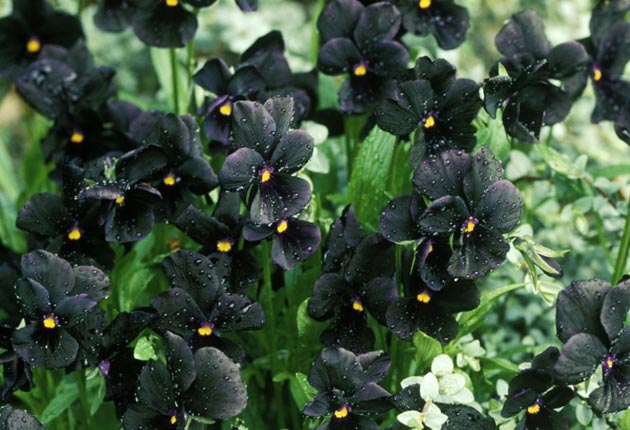Dark side of the bloom: how spring turned black
A new fashion for flowers is striking a bold posy in garden centres

Your support helps us to tell the story
From reproductive rights to climate change to Big Tech, The Independent is on the ground when the story is developing. Whether it's investigating the financials of Elon Musk's pro-Trump PAC or producing our latest documentary, 'The A Word', which shines a light on the American women fighting for reproductive rights, we know how important it is to parse out the facts from the messaging.
At such a critical moment in US history, we need reporters on the ground. Your donation allows us to keep sending journalists to speak to both sides of the story.
The Independent is trusted by Americans across the entire political spectrum. And unlike many other quality news outlets, we choose not to lock Americans out of our reporting and analysis with paywalls. We believe quality journalism should be available to everyone, paid for by those who can afford it.
Your support makes all the difference.It sounds like a thriller, or perhaps a novel by Alexandre Dumas pere. In fact, the black petunia is this year's bedding plant sensation, going on sale nationwide in garden centres and plant catalogues this week.
Petunia Black Velvet, to use its official name, is the latest in a series of black-flowered or dark-leaved plants to come on to the market.
These dusky cultivars are increasing in popularity, as gardeners – who are as susceptible to fashion as any teenager – experiment with new colour schemes and styles. So how do you get a black flower? It's not really black, of course, but a very deep purple or red. The colour is created by anthocyanins – the pigments that create red, purple and blue colours in flowers and fruit. These are present in every part of the plant, including the stems, leaves and roots. They also act as antioxidants, which is why fruits that are high in anthocyanins, such as blueberries, are labelled as superfoods.
In plants, however, their purpose is mainly to attract pollinators (in the case of flowers) or animals, which will eat the fruit and disperse the seed in droppings.
Commercial breeders will cross varieties with high levels of anthocyanins to increase the level of the pigments in either the leaves, the flowers or the fruit.
It takes a huge amount of experience and patience to breed a new plant, said Stuart Lowen, marketing manager of Ball Colegrave, who developed Petunia Black Velvet.
"We're always trying to push the boundaries. The public always want something that's a novelty, but sometimes the breeder will come up with a colour that the market just isn't ready for," Mr Lowen said. "Black is the holy grail for plant breeders, though. Everyone wants black plants."
It took four years for Ball flower breeder Jianping Ren to develop the black petunia. "The black colour did not exist in petunias before, so it has to come from the right recombination of a novel colour mutant and multiple regular colour genetic backgrounds," she said. "It is very different from breeding true blue flowers because at least there are some blue flowers you can start with. It's unique and unusual, and opens the door for more new colours."
The trend for black flowers and leaves has grown in the past 10 years, perhaps reflecting the popularity of a more minimalist style in garden design.
Against a dark background, such as a fence, or a hedge of evergreens, black foliage or flowers will disappear. Contrasted with gravel, stainless steel, or painted surfaces in pale colours, however, black looks wonderfully dramatic.
Petunias originate in South America and will not survive a British winter, so they have to be treated as annuals – lasting only one season. But there are perennials and shrubs with black leaves or flowers which are descended from native British species.
Anthriscus sylvestris Ravenswing, for example, is a black-leaved cow parsley, while Sambucus nigra Black Lace is a sultry version of the native elder. Viola Bowles Black is a black pansy and Althea nigra represents the dark side of that cottage-garden favourite, the hollyhock.
Anna Pavord's verdict
*Anna Pavord, The Independent's gardening correspondent, is wary of the all-black look. "Everything depends on the texture of the petal. If it is all matt, it's hopeless. If it has the sheen of the most expensive satin (as black tulips do) black can shine. But for that, you need light. Black in shade is as cheerless as yesterday's mascara."
Graham Rice, author of Discovering Annuals and editor-in-chief of the RHS Encyclopedia of Perennials, said: "With dainty white bacopa, with lime-green coleus as a background or with Helichrysum 'Limelight' snaking through it, or with other petunias in yellow, deep red or white – there are plenty of options."
Join our commenting forum
Join thought-provoking conversations, follow other Independent readers and see their replies
Comments